Eggplant Container Growing: Unlock the secrets to a bountiful harvest, even without a sprawling garden! Have you ever dreamt of plucking fresh, glossy eggplants right from your patio? I know I have! For centuries, eggplants have been cherished in cultures around the world, from their origins in Southeast Asia to their starring roles in Mediterranean cuisine. But what if you don’t have acres of land to dedicate to these beautiful plants?
That’s where the magic of container gardening comes in. Many people are intimidated by the thought of growing vegetables, especially something as seemingly exotic as an eggplant. They think it requires vast amounts of space, time, and expertise. But I’m here to tell you that’s simply not true! With a few clever tricks and DIY hacks, you can successfully embark on eggplant container growing and enjoy a delicious, homegrown harvest.
This article is your ultimate guide to mastering the art of growing eggplants in containers. I’ll share my tried-and-true methods, from selecting the perfect pot and soil to providing the right amount of sunlight and water. Get ready to ditch the grocery store eggplants and savor the unparalleled flavor of your own homegrown bounty! Let’s get started!
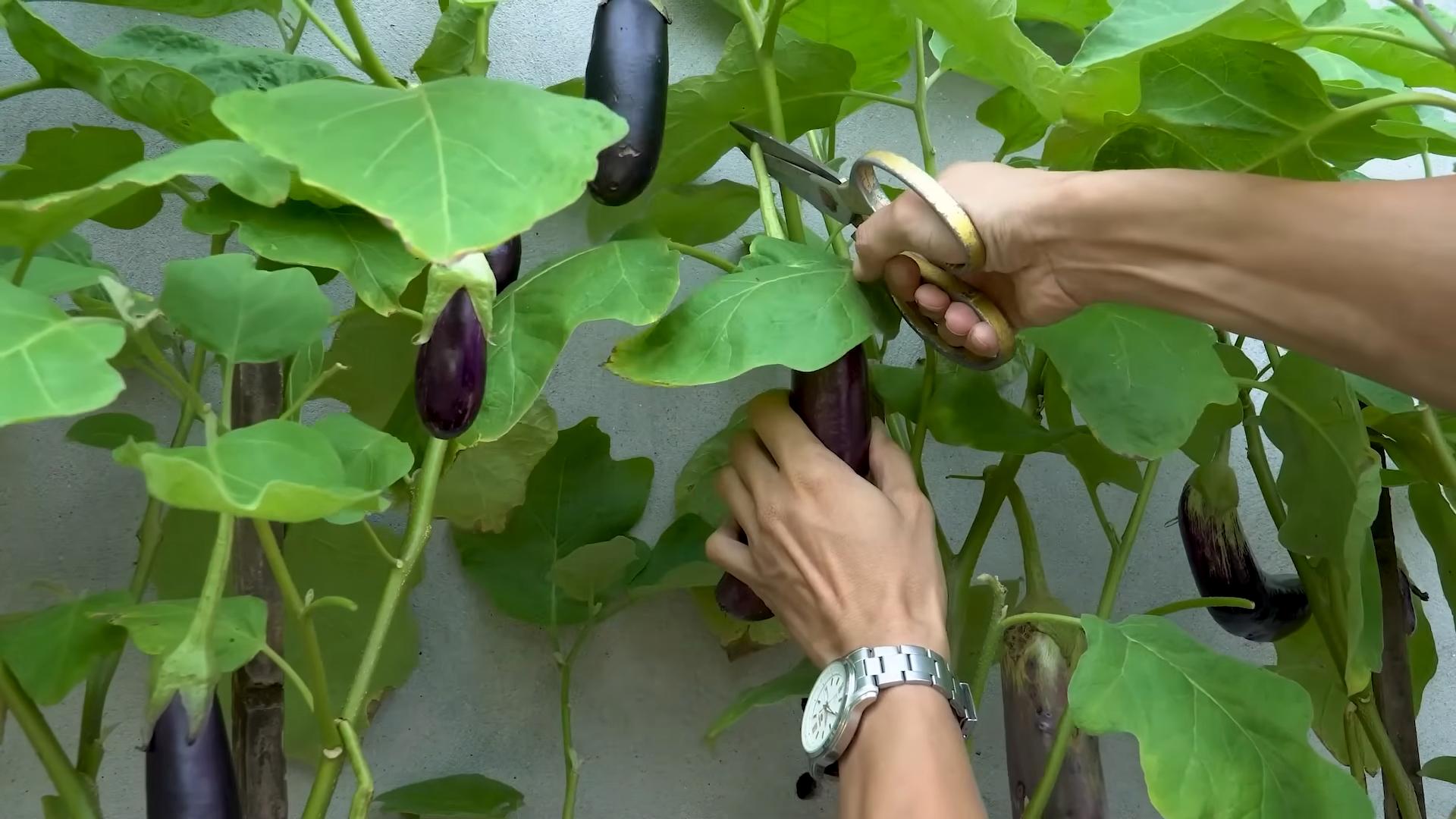
Growing Eggplant in Containers: A Comprehensive DIY Guide
Hey there, fellow gardening enthusiasts! I’m so excited to share my tried-and-true method for growing delicious, vibrant eggplants right in containers. Forget needing a huge garden – with a little know-how, you can enjoy homegrown eggplant even on a small balcony or patio. Let’s dive in!
Choosing the Right Eggplant Variety
Before we get our hands dirty, it’s crucial to pick the right eggplant variety for container growing. Not all eggplants are created equal! Some grow into massive bushes, while others are more compact and suited for pots.
* **Compact Varieties are Key:** Look for varieties specifically bred for containers or smaller spaces. These include:
* ‘Patio Baby’: Produces small, glossy, dark purple eggplants.
* ‘Hansel’: Offers clusters of slender, purple fruits.
* ‘Gretel’: A white-fruited variety with a mild flavor.
* ‘Fairy Tale’: Beautiful, striped purple and white eggplants.
* ‘Little Fingers’: Long, thin, and tender eggplants.
* Consider Your Climate: Choose varieties that thrive in your local climate. Check seed packets or online resources for information on heat tolerance and growing season length.
* Think About Your Taste: Do you prefer classic dark purple eggplants, or are you looking for something more unique like white, green, or striped varieties?
Preparing Your Container and Soil
The right container and soil are essential for healthy eggplant growth. Eggplants are heavy feeders and need well-draining soil to thrive.
* **Container Size Matters:** Choose a container that is at least 14-16 inches in diameter and 12 inches deep. A 5-gallon bucket or larger is ideal. The bigger, the better, as it gives the roots plenty of room to grow.
* **Drainage is Crucial:** Make sure your container has drainage holes at the bottom. Eggplants hate sitting in soggy soil, which can lead to root rot.
* **Potting Mix is Your Friend:** Don’t use garden soil in your containers! It’s too heavy and doesn’t drain well. Instead, opt for a high-quality potting mix specifically formulated for containers. I like to use a mix that includes peat moss, perlite, and vermiculite for optimal drainage and aeration.
* Amend the Soil (Optional): To give your eggplants an extra boost, you can amend your potting mix with compost or aged manure. This will provide essential nutrients and improve soil structure. I usually add about 25% compost to my potting mix.
Planting Your Eggplant Seedlings
Now for the fun part – planting! You can start your eggplant seeds indoors 6-8 weeks before the last expected frost, or purchase seedlings from a local nursery.
* **Starting from Seed (Optional):**
1. Fill seed trays or small pots with seed-starting mix.
2. Sow seeds about ¼ inch deep.
3. Keep the soil moist and warm (around 75-85°F). A heat mat can be helpful.
4. Once seedlings emerge, provide them with plenty of light. A grow light is ideal.
5. Transplant seedlings into larger pots once they have a few sets of true leaves.
* **Transplanting Seedlings:**
1. Gently remove the eggplant seedling from its nursery pot.
2. Loosen the roots slightly.
3. Dig a hole in the center of your container that is large enough to accommodate the root ball.
4. Place the seedling in the hole and backfill with potting mix.
5. Water thoroughly.
6. Add a layer of mulch around the base of the plant to help retain moisture and suppress weeds. I like to use straw or wood chips.
* Spacing:** If you’re planting multiple eggplant seedlings in a large container, space them at least 18-24 inches apart.
Caring for Your Container Eggplants
Eggplants need consistent care to thrive in containers. This includes watering, fertilizing, and providing support.
* **Watering:**
1. Water your eggplants deeply whenever the top inch of soil feels dry to the touch.
2. Avoid overwatering, as this can lead to root rot.
3. Water in the morning to allow the foliage to dry before evening, which can help prevent fungal diseases.
4. Container plants dry out faster than those in the ground, so check the soil moisture regularly, especially during hot weather.
* **Fertilizing:**
1. Eggplants are heavy feeders and need regular fertilization.
2. Start fertilizing about two weeks after transplanting.
3. Use a balanced fertilizer (e.g., 10-10-10) or a fertilizer specifically formulated for vegetables.
4. Follow the instructions on the fertilizer label.
5. You can also supplement with liquid seaweed or fish emulsion for added nutrients.
6. I like to fertilize every 2-3 weeks during the growing season.
* **Sunlight:**
1. Eggplants need at least 6-8 hours of sunlight per day.
2. Place your containers in a sunny location.
3. If you live in a very hot climate, you may need to provide some afternoon shade to prevent the plants from getting scorched.
* **Support:**
1. As your eggplants grow, they may need support to prevent the branches from breaking under the weight of the fruit.
2. Use stakes, cages, or trellises to provide support.
3. Tie the stems to the support structure with soft twine or plant ties.
* **Pruning (Optional):**
1. Pruning can help improve air circulation and encourage fruit production.
2. Remove any suckers (small shoots that grow from the base of the plant).
3. You can also remove some of the lower leaves to improve air circulation.
4. Pinch off the tips of the branches to encourage branching and more fruit.
Dealing with Pests and Diseases
Even in containers, eggplants can be susceptible to pests and diseases. Here’s how to deal with some common problems:
* **Common Pests:**
* **Aphids:** These tiny insects suck sap from the leaves and can cause them to curl and distort. Spray them with a strong stream of water or use insecticidal soap.
* **Flea Beetles:** These small, jumping beetles chew tiny holes in the leaves. Cover the plants with row covers or use insecticidal soap.
* **Spider Mites:** These tiny mites create webs on the leaves and can cause them to turn yellow and brown. Spray them with a strong stream of water or use insecticidal soap.
* **Tomato Hornworms:** These large caterpillars can quickly defoliate an eggplant plant. Handpick them off the plants or use Bacillus thuringiensis (Bt).
* **Common Diseases:**
* **Verticillium Wilt:** This fungal disease causes the leaves to wilt and turn yellow. There is no cure, so it’s important to prevent it by using disease-resistant varieties and practicing good sanitation.
* **Fusarium Wilt:** Similar to Verticillium wilt, this fungal disease causes wilting and yellowing of the leaves. Prevent it by using disease-resistant varieties and practicing good sanitation.
* **Early Blight:** This fungal disease causes dark spots on the leaves. Remove infected leaves and spray with a fungicide.
* **Anthracnose:** This fungal disease causes sunken spots on the fruit. Remove infected fruit and spray with a fungicide.
* Prevention is Key:**
* Choose disease-resistant varieties.
* Practice good sanitation by removing fallen leaves and debris.
* Water in the morning to allow the foliage to dry before evening.
* Provide good air circulation.
* Inspect your plants regularly for signs of pests and diseases.
Harvesting Your Eggplants
The moment you’ve been waiting for – harvesting your homegrown eggplants!
* **When to Harvest:**
1. Eggplants are typically ready to harvest 60-80 days after transplanting.
2. Harvest when the fruit is glossy and has reached its mature size.
3. The skin should be firm and slightly resistant to pressure.
4. If the seeds are large and dark, the eggplant is overripe and may be bitter.
* **How to Harvest:**
1. Use a sharp knife or pruning shears to cut the eggplant from the plant.
2. Leave a small stem attached to the fruit.
3. Handle the eggplants carefully to avoid bruising.
* Enjoy Your Harvest:**
1. Eggplants can be stored in the refrigerator for up to a week.
2. Use them in your favorite recipes, such as eggplant parmesan, baba ghanoush, or ratatouille
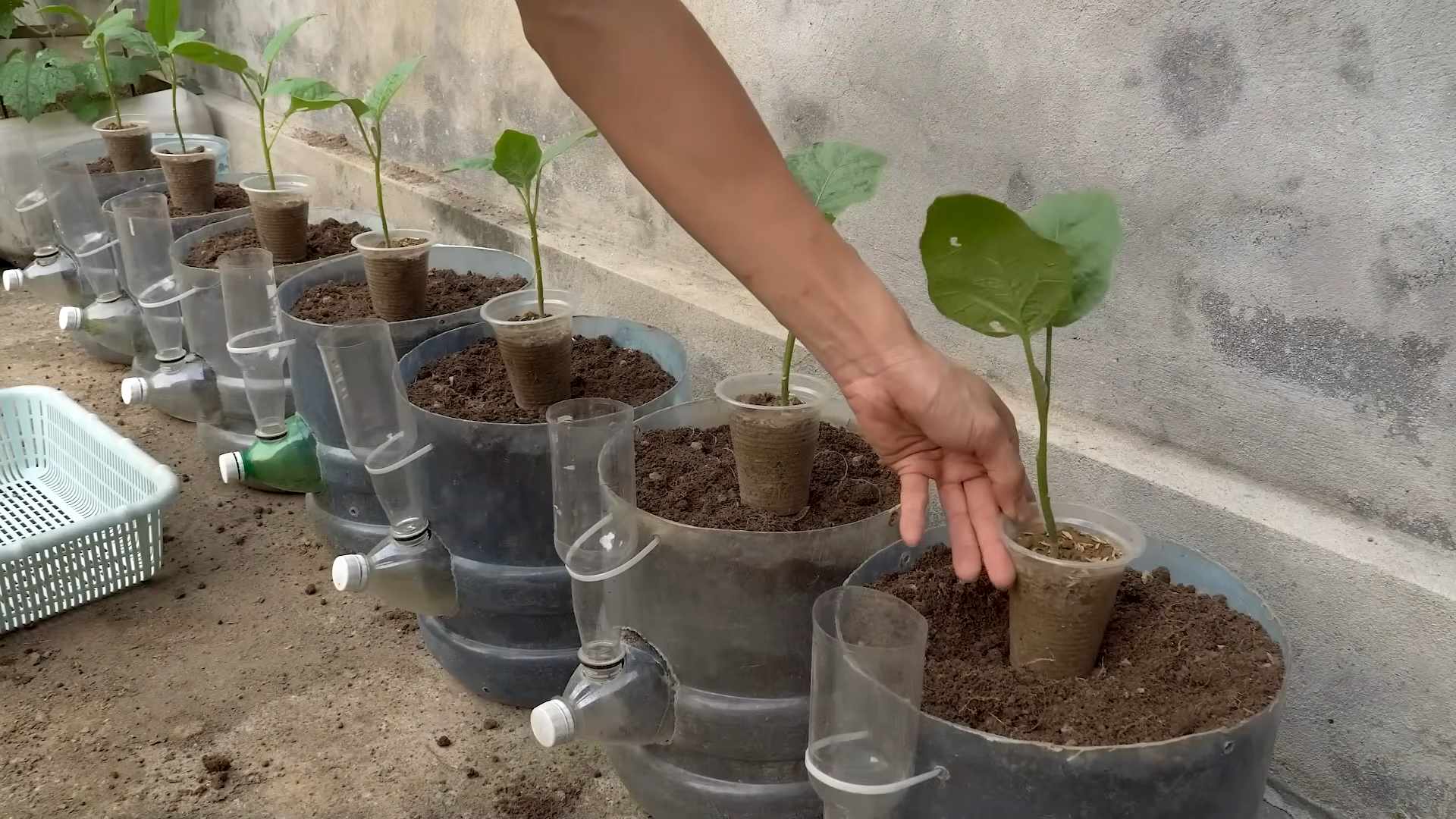
Conclusion
So, there you have it! Growing your own eggplants in containers is not only achievable, but it’s also incredibly rewarding. We’ve walked through the essential steps, from selecting the right container and soil to providing adequate sunlight and water. But the real magic lies in the DIY trick we’ve shared: creating a self-watering system using repurposed materials. This simple yet effective method can significantly reduce the amount of time you spend watering, especially during those hot summer months, and it ensures your eggplant plants receive consistent moisture, leading to healthier, more abundant harvests.
Why is this DIY trick a must-try? Because it addresses one of the biggest challenges of container gardening: maintaining consistent soil moisture. Overwatering and underwatering are common pitfalls, but this self-watering system helps to regulate moisture levels, preventing both extremes. Plus, it’s an eco-friendly solution that utilizes materials you likely already have on hand, saving you money and reducing waste. It’s a win-win!
Beyond the basic setup, there are several variations you can explore to customize your self-watering system. For example, you could experiment with different types of wicking materials, such as strips of old t-shirts or felt, to see which works best for your specific container and climate. You could also add a layer of mulch on top of the soil to further conserve moisture and suppress weeds. Consider adding a small amount of slow-release fertilizer to the water reservoir to provide your eggplants with a continuous supply of nutrients.
For those living in particularly hot climates, consider using a larger reservoir to extend the time between refills. You might also want to position your containers in a location that receives some afternoon shade to prevent the soil from overheating. Conversely, if you live in a cooler climate, you can use dark-colored containers to absorb more heat and help your eggplants thrive.
Remember, successful eggplant container growing is all about experimentation and adaptation. Don’t be afraid to try different techniques and see what works best for you and your plants. The key is to pay attention to your eggplants’ needs and adjust your approach accordingly.
We are confident that with a little effort and the help of our DIY self-watering trick, you’ll be enjoying delicious, homegrown eggplants in no time. So, grab your containers, gather your materials, and get ready to embark on a rewarding gardening adventure.
We encourage you to try this DIY trick and share your experience with us! Post photos of your eggplant containers and self-watering systems on social media using #EggplantContainerGrowing and let us know how it worked for you. We’re eager to see your successes and learn from your experiences. Happy gardening!
Frequently Asked Questions (FAQ)
What type of container is best for growing eggplants?
The ideal container for growing eggplants should be at least 5 gallons in size, but a 10-gallon container is even better. This provides ample space for the roots to develop and ensures the plant has enough room to grow. Choose a container made from durable material like plastic, terracotta, or fabric. Make sure the container has drainage holes to prevent waterlogging. Dark-colored containers can help warm the soil in cooler climates, while lighter-colored containers are preferable in hotter climates to prevent overheating.
What kind of soil should I use for container-grown eggplants?
Eggplants thrive in well-draining, nutrient-rich soil. A good potting mix specifically formulated for vegetables is ideal. Avoid using garden soil, as it can be too heavy and compact in containers, hindering root growth. You can also create your own potting mix by combining equal parts of peat moss, perlite, and compost. Adding some slow-release fertilizer to the mix will provide a steady supply of nutrients throughout the growing season.
How much sunlight do eggplants need?
Eggplants require at least 6-8 hours of direct sunlight per day to produce a good harvest. Choose a sunny location for your containers where they will receive plenty of light. If you live in a particularly hot climate, providing some afternoon shade can help prevent the plants from overheating. If you don’t have enough natural sunlight, you can supplement with grow lights.
How often should I water my container-grown eggplants?
Watering frequency depends on several factors, including the size of the container, the type of soil, the weather, and the size of the plant. Generally, you should water your eggplants when the top inch of soil feels dry to the touch. Water deeply until water drains out of the drainage holes. Avoid overwatering, as this can lead to root rot. The DIY self-watering system described in this article can help regulate moisture levels and reduce the need for frequent watering.
What are some common pests and diseases that affect eggplants?
Common pests that affect eggplants include aphids, flea beetles, spider mites, and whiteflies. You can control these pests by spraying your plants with insecticidal soap or neem oil. Diseases that can affect eggplants include verticillium wilt, fusarium wilt, and blossom-end rot. Choose disease-resistant varieties and practice good sanitation to prevent these problems. Blossom-end rot is often caused by calcium deficiency, so adding calcium to the soil can help prevent it.
How do I fertilize my container-grown eggplants?
Eggplants are heavy feeders and require regular fertilization to produce a good harvest. Start fertilizing your plants a few weeks after transplanting them into their containers. Use a balanced fertilizer with an NPK ratio of 10-10-10 or 14-14-14. You can also use a fertilizer specifically formulated for vegetables. Fertilize every 2-3 weeks throughout the growing season. You can also add compost tea to the soil to provide additional nutrients.
How do I prune my eggplant plants?
Pruning can help improve air circulation and encourage fruit production. Remove any suckers that grow from the base of the plant. You can also remove some of the lower leaves to improve air circulation and prevent disease. Once the plant starts producing fruit, you can pinch off the tips of the branches to encourage the plant to focus its energy on fruit development.
When should I harvest my eggplants?
Eggplants are typically ready to harvest about 60-80 days after transplanting. The fruit should be firm, glossy, and have a deep color. Gently twist or cut the eggplant from the plant, leaving a small stem attached. Overripe eggplants will become dull, soft, and bitter.
Can I grow different varieties of eggplants in containers?
Yes, you can grow different varieties of eggplants in containers. Choose varieties that are well-suited for container growing, such as ‘Patio Baby,’ ‘Fairy Tale,’ or ‘Hansel.’ Be sure to provide each plant with enough space to grow and thrive.
How does the DIY self-watering system work?
The DIY self-watering system works by creating a reservoir of water at the bottom of the container. A wicking material, such as cotton rope or strips of fabric, draws water from the reservoir up into the soil, providing a consistent supply of moisture to the plant’s roots. This system helps to prevent overwatering and underwatering, and it reduces the need for frequent watering. The size of the reservoir and the type of wicking material will determine how often you need to refill the reservoir.

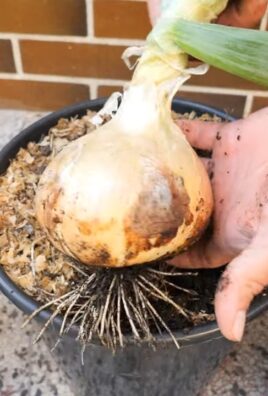
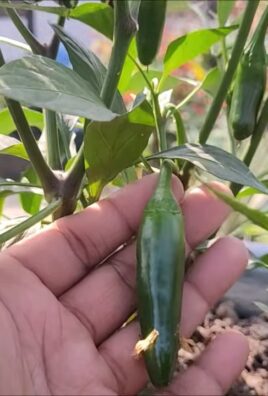
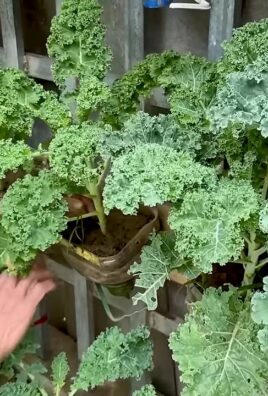
Leave a Comment